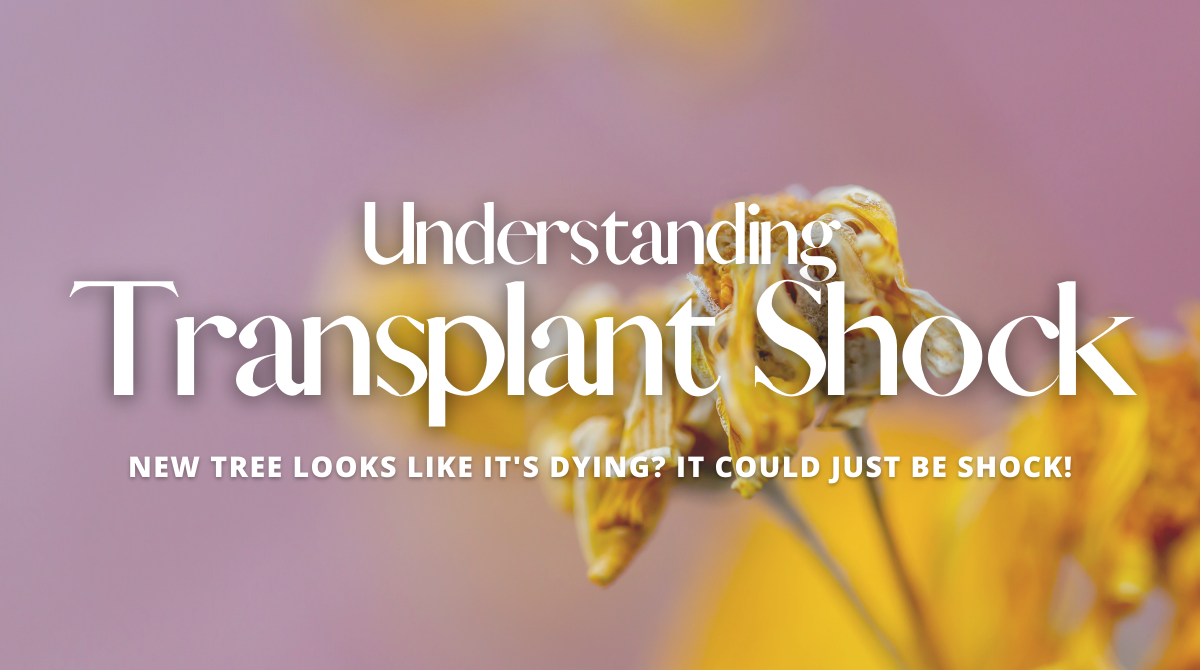Transplant Shock

Charlotte’s Aging Canopy
3.21.22
5 Daily Habits that Support Trees
4.21.22
By: Kate Bolkin, Community Educator and certified arborist
You know that feeling when you get out of bed early after a long sleep and your legs feel stiff and your eyes are still blurry and you know it’s going to take a some time before you to get going?
That’s kind of what it’s like when a tree is transplanted. Going from the cozy home you know to a new one can be, well, shocking. And that’s why at times, trees do experience transplant shock during the planting or replanting process. But thankfully, with proper care most trees do recover from the sudden change in environment.
Why does transplant shock happen?
Transplant shock describes the various stresses that can occur when a tree (or plant) is moved from one location to another. This can be from a container to a different container, a container to the ground, the ground to a different spot in the ground, etc.
The primary stressor that causes transplant shock is root loss and dried-out roots when a tree is moved.
What are symptoms of transplant shock?
Since transplant shock mostly stems from root stress, transplant shock symptoms look similar to symptoms of drought. This includes:
- Wilting leaves or flowers
- Premature fall color
- Dropping leaves
- Branch dieback
If you find that your newly planted tree is experiencing these things despite sufficient watering, it could be transplant shock.
How do I treat transplant shock?
- Keep it well watered: During the growing season, newly planted and transplanted trees require supplemental water besides just rain. Find out all you need to know about watering here!
- Mulch: Organic mulch helps soil retain moisture, keeps weeds away, and provides trees with nutrients. But make sure you mulch properly, as improper mulching can stress the tree even more.
- Limit fertilizer: Fertilizer should be avoided when a tree is newly planted or moved. Fertilizer can dry out the roots and worsen the tree’s already fragile state.
- Be patient: If you treat your tree well, the tree should recover from shock and establish itself. It can take up to 3 years for a tree with transplant shock to fully recover.
How do I avoid transplant shock?
The best course of action is to reduce the chances of transplant shock before it occurs. Here’s how:
- Plant/transplant at the right time: In North Carolina, trees experience less stress when planted between fall and early spring. If you need to move an already established tree, the dormant season is best (roughly November-February).
- Plant properly the first time: A tree that’s planted incorrectly is more likely to experience transplant shock than one that’s done right. Watch our tree planting video to learn how.
- Avoid having to move your tree: If you practice “right tree, right place” you shouldn’t have to transplant your tree. Knowing your tree’s mature height and its soil, sun, and water needs will allow your tree to thrive in its new home and reduce the chances of you having to move it later on.
